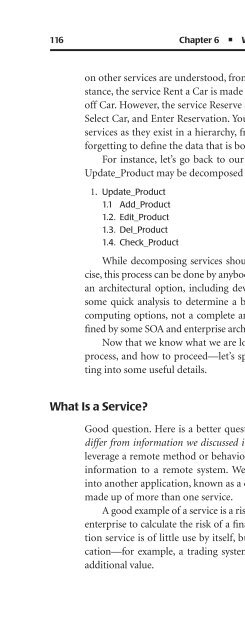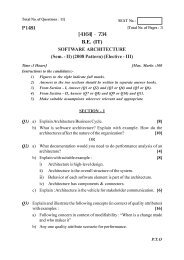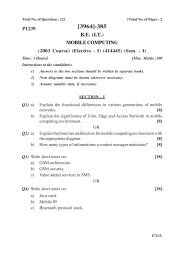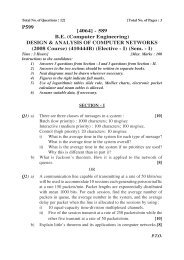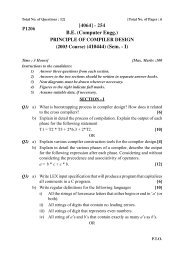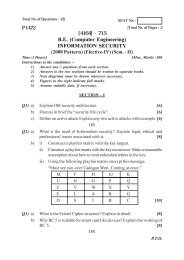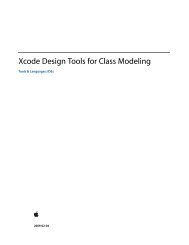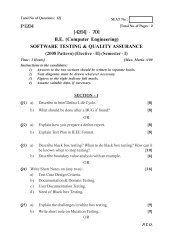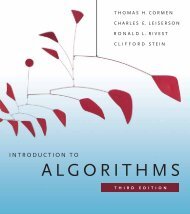Cloud Computing and SOA Convergence in Your Enterprise: A Step ...
Cloud Computing and SOA Convergence in Your Enterprise: A Step ...
Cloud Computing and SOA Convergence in Your Enterprise: A Step ...
You also want an ePaper? Increase the reach of your titles
YUMPU automatically turns print PDFs into web optimized ePapers that Google loves.
116 Chapter 6 Work<strong>in</strong>g from <strong>Your</strong> Services to the <strong>Cloud</strong>s<br />
on other services are understood, from the highest level to the lowest. For <strong>in</strong>stance,<br />
the service Rent a Car is made up of Reserve a Car, Pick Up Car, Drop<br />
off Car. However, the service Reserve a Car is made up of Identify Customer,<br />
Select Car, <strong>and</strong> Enter Reservation. You get the idea. In essence, we def<strong>in</strong>e the<br />
services as they exist <strong>in</strong> a hierarchy, from the highest to the lowest level, not<br />
forgett<strong>in</strong>g to def<strong>in</strong>e the data that is bound to those services.<br />
For <strong>in</strong>stance, let’s go back to our c<strong>and</strong>idate services for General Ledger:<br />
Update_Product may be decomposed to:<br />
1. Update_Product<br />
1.1 Add_Product<br />
1.2. Edit_Product<br />
1.3. Del_Product<br />
1.4. Check_Product<br />
While decompos<strong>in</strong>g services should be considered an architectural exercise,<br />
this process can be done by anybody who is look<strong>in</strong>g at cloud comput<strong>in</strong>g as<br />
an architectural option, <strong>in</strong>clud<strong>in</strong>g developers <strong>and</strong> project leaders. It is really<br />
some quick analysis to determ<strong>in</strong>e a basis of underst<strong>and</strong><strong>in</strong>g to look at cloud<br />
comput<strong>in</strong>g options, not a complete <strong>and</strong> rigorous architectural process as def<strong>in</strong>ed<br />
by some <strong>SOA</strong> <strong>and</strong> enterprise architecture approaches <strong>and</strong> methodologies.<br />
Now that we know what we are look<strong>in</strong>g for—basic concepts, the general<br />
process, <strong>and</strong> how to proceed—let’s spend the rema<strong>in</strong>der of the chapter gett<strong>in</strong>g<br />
<strong>in</strong>to some useful details.<br />
What Is a Service<br />
Good question. Here is a better question: What is a service, <strong>and</strong> how does it<br />
differ from <strong>in</strong>formation we discussed <strong>in</strong> Chapter 5 When us<strong>in</strong>g a service, we<br />
leverage a remote method or behavior rather than simply extract or publish<br />
<strong>in</strong>formation to a remote system. We typically abstract this remote service<br />
<strong>in</strong>to another application, known as a composite application, which is usually<br />
made up of more than one service.<br />
A good example of a service is a risk analysis process, which runs with<strong>in</strong> an<br />
enterprise to calculate the risk of a f<strong>in</strong>ancial transaction. This remote application<br />
service is of little use by itself, but when abstracted <strong>in</strong>to a larger application—for<br />
example, a trad<strong>in</strong>g system—that remote application service has<br />
additional value.


